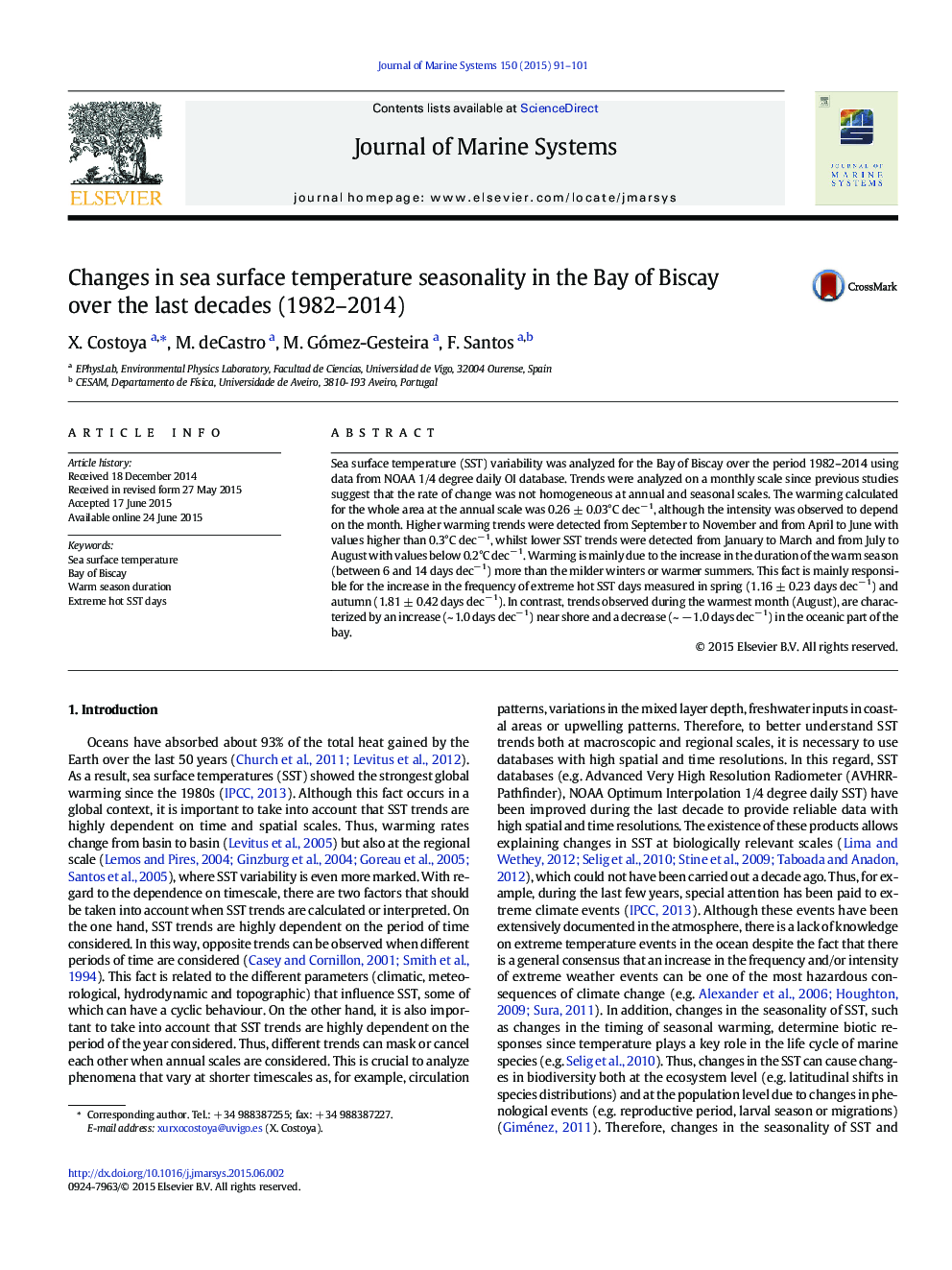| Article ID | Journal | Published Year | Pages | File Type |
|---|---|---|---|---|
| 4547917 | Journal of Marine Systems | 2015 | 11 Pages |
•A warming (0.26 ± 0.03°C dec− 1) was detected in the Bay of Biscay (1982–2014).•The strongest SST warming occurred during April–June and September–November.•The warm season has expanded in approximately one month during the last three decades.•An increase in the number of extreme hot SST days has occurred during the months studied.
Sea surface temperature (SST) variability was analyzed for the Bay of Biscay over the period 1982–2014 using data from NOAA 1/4 degree daily OI database. Trends were analyzed on a monthly scale since previous studies suggest that the rate of change was not homogeneous at annual and seasonal scales. The warming calculated for the whole area at the annual scale was 0.26 ± 0.03°C dec− 1, although the intensity was observed to depend on the month. Higher warming trends were detected from September to November and from April to June with values higher than 0.3°C dec− 1, whilst lower SST trends were detected from January to March and from July to August with values below 0.2°C dec− 1. Warming is mainly due to the increase in the duration of the warm season (between 6 and 14 days dec− 1) more than the milder winters or warmer summers. This fact is mainly responsible for the increase in the frequency of extreme hot SST days measured in spring (1.16 ± 0.23 days dec− 1) and autumn (1.81 ± 0.42 days dec− 1). In contrast, trends observed during the warmest month (August), are characterized by an increase (~ 1.0 days dec− 1) near shore and a decrease (~ − 1.0 days dec− 1) in the oceanic part of the bay.
